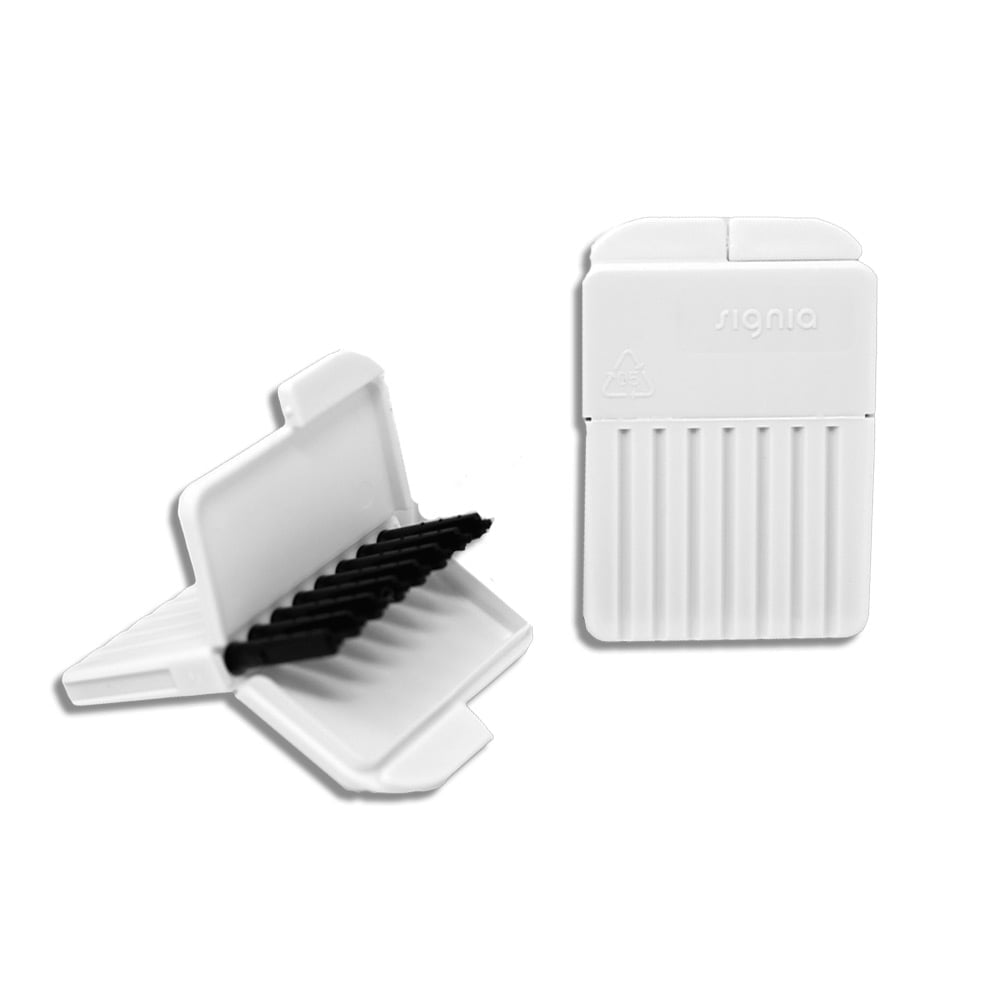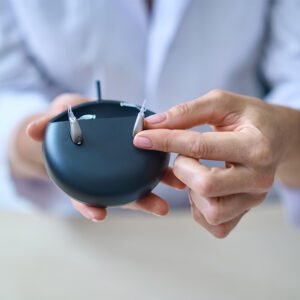Did you know that while earwax might seem like an annoyance, it actually plays a vital role in keeping our ears healthy? It prevents infections, keeps the ear canal moisturized, and acts as a barrier against foreign particles. This natural substance is fantastic, but for hearing aid users, too much earwax can become a big problem. Excessive earwax can clog your hearing aids, affecting sound quality or even stopping the device from working altogether. But don’t worry – that’s where wax filters come in. In this guide, we’ll explain everything you need to know about replacing wax filters. We’ll walk you through the process with easy-to-follow steps and helpful tips, so you can keep your hearing aids in top condition.
Earwax and Hearing Aids
For hearing aid users, earwax accumulation is the leading cause of device malfunctions. But why is earwax such a common issue for those with hearing aids?
Hearing aids sit inside or around the ear canal, which can disrupt the natural movement of earwax out of the ear. This disruption can cause earwax to build up more quickly than it would in people who don’t use hearing aids. Additionally, the presence of a hearing aid can stimulate the ear to produce even more earwax, exacerbating the problem.
Earwax can easily clog the microphone and receiver, leading to several frustrating issues:
- Reduced sound quality: When earwax builds up, it can cause sound to become muffled or distorted, making it difficult to hear clearly.
- Complete device failure: In severe cases, too much earwax can block your hearing aid entirely, causing it to stop working.
These problems can be incredibly inconvenient, but there’s good news! Regular maintenance and the use of wax filters can help prevent these issues. By keeping your hearing aids clean and ensuring the wax filters are in good condition, you can enjoy clear sound and avoid unexpected breakdowns.
What Is a Wax Filter?
Let’s dive into the world of wax filters! Wax filters, sometimes called wax traps or wax guards, are small plastic screens that play a crucial role in protecting your hearing aid’s receiver from earwax. These tiny components are essential for maintaining the performance of your hearing aids.
Wax filters are found in most types of hearing aids, including in-the-ear (ITE), receiver-in-the-ear (RITE), and behind-the-ear (BTE) models. Their primary job is to prevent earwax from entering and clogging the delicate parts of your hearing aid, ensuring that sound quality remains clear and consistent.
Understanding and maintaining your wax filters can make a big difference in your hearing experience. Up next, we’ll show you where to find these filters in your hearing aids and how to take care of them properly.
Where is the Wax Filter Located?
Now that we know what wax filters are, let’s find out where they’re located in your hearing aids. The location of the wax filter varies depending on the type of hearing aid you have.
1) ITE Hearing Aids:
For ITE (In-the-Ear) hearing aids, the wax filter is located inside the hearing aid itself. You’ll usually find it near the part of the device that fits into your ear canal.
2) RITE & BTE Hearing Aids:
In RITE (Receiver-in-the-Ear) and BTE (Behind- the-Ear) hearing aids, the wax filter is typically found in the speaker or mold. These parts are responsible for delivering sound into your ear, so it’s important to keep them free of earwax.
When to Replace Your Wax Filter
Knowing when to change your wax filter can be tricky. Nevertheless, it is key to keeping your hearing aids in top shape. The frequency of changing wax filters depends on several factors, including how much earwax you produce and how often you use your hearing aids.
Most users find that changing their wax filters every 3-4 weeks works well. This routine helps prevent any significant build-up of earwax. It is, however, a good idea to check your wax filters regularly. Each time you clean your hearing aids, take a moment to see if the filter looks clogged or dirty.
So, how do you know it’s time to change the filter? Here are the two main signs to watch for:
1) Muffled Sound:
If sounds start to seem muffled or unclear, earwax might be blocking the receiver.
2) Reduced Volume:
If you’re having trouble hearing, even with your hearing aid set at its usual volume, it could be due to a clogged wax filter.
By paying attention to these signs and maintaining a regular schedule, you can ensure your hearing aids continue to provide clear, crisp sound.
Step-by-Step Guide to Removing and Replacing Wax Filters
Now that you know when to change your wax filters, let’s walk through the process of removing and replacing them. It’s simpler than you might think! Follow these steps to keep your hearing aids in top condition:
1) Removing the Wax Filter
- Prepare the tool: Your new wax filters will come with a handy tool that has two ends – a stick end and a pin end. Make sure you have this tool ready.
- Remove the old filter: Use the pin end of the tool to push into the used wax filter. Gently pull the tool back to extract the old filter.
2) Inserting the New Wax Filter
- Attach the new filter: With the old filter removed, it’s time to insert the new one. Use the stick end of the tool to place the new filter into the hearing aid’s receiver.
- Secure the filter: Make sure the new filter is securely in place. Once it’s settled, remove the tool. Your hearing aid should now be ready to use with a fresh filter.
Follow these simple steps to easily replace your wax filters and keep your hearing aids functioning perfectly. As a result, your devices will continue to provide you with clear and reliable sound. Furthermore, by taking these proactive measures, you can extend the life of your hearing aids and enjoy better hearing every day.
Discover Our Range of Wax Filters
At Hearing Aid Accessory, we understand the importance of maintaining your hearing aids with high-quality products. That’s why we offer a wide range of options to suit all your needs. Our wax filters are suitable for various brands of hearing aids, ensuring you can find the perfect match for your device.
We pride ourselves on providing top-quality products that help you keep your hearing aids in excellent condition. By choosing our wax filters, you can enjoy clear, reliable sound and extend the life of your hearing aids.
Ready to find the right wax filters for your hearing aids? Click the button below to browse our range and make your purchase today!



